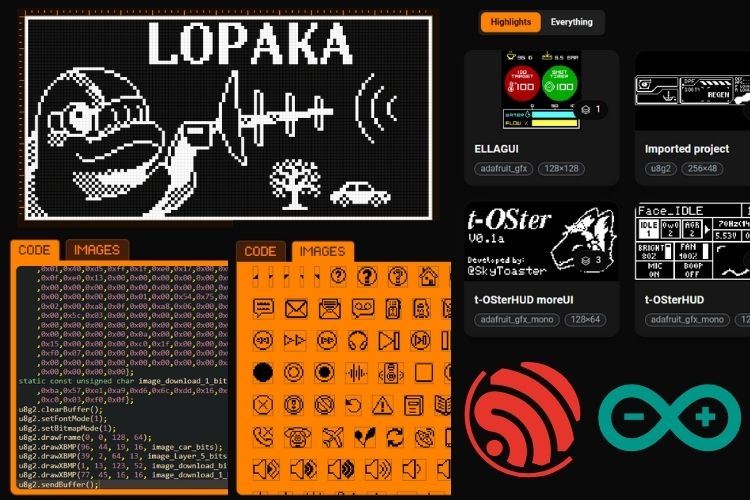
Lopaka is a robust web-based tool designed to simplify graphics design for embedded systems. Originally gaining attention through a Reddit post, it allows users to create pixel-perfect user interfaces (UIs) for platforms like Arduino, ESP32, and Flipper Zero. This flexibility makes it ideal for both beginners and seasoned developers, as it can be accessed from any device through its intuitive web interface.
Features & Usability
For Beginners Lopaka’s user-friendly design ensures a smooth learning curve. Its drag-and-drop components, real-time previews, and automatic code generation for popular libraries like U8g2 and Adafruit GFX make it accessible even to those with limited coding experience. Hobbyists and students can jump straight into UI creation without worrying about complicated setups or programming hurdles.
Experienced developers will appreciate its advanced features, including multi-screen support, custom fonts, and collaborative design workflows. Its integration with C/C++ ensures that the tool can be used for both small and large-scale projects, making it versatile enough for professional applications. Currently, Lopaka supports the Arduino IDE and ESP-IDF, further increasing its utility in a wide range of embedded development environments.
Fostering Innovation and Accessibility
Beyond streamlining design processes, the tool inspires creativity within the electronics community. By lowering the entry barrier for both individuals and organizations, it promotes innovation across fields such as education, assistive technology, and consumer electronics. It’s clear that the development team has created a remarkable tool that is helping engineers and hobbyists alike by enhancing productivity and creativity in embedded system projects.
Lopaka stands out as an essential tool that not only accelerates interface design but also plays a significant role in pushing forward technological creativity and accessibility.

